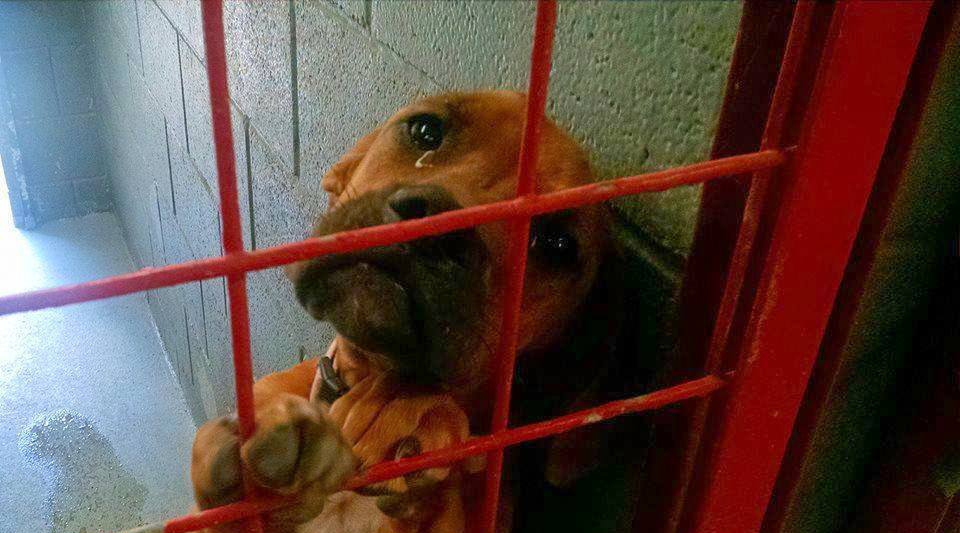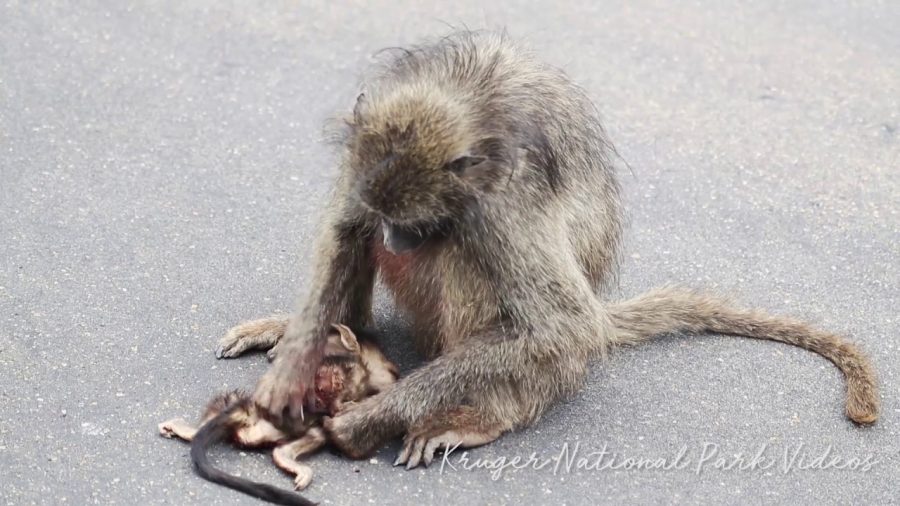By Emma - January 9, 2022 https://pawsomeadvice.com/pets/animal-shelter-statistics/

Animal shelter statistics are a bit tough to read. But if we all understand what’s going on, our hearts might reach out to help those in need.
If you’re someone who wants to contribute more to their community, volunteering at a local shelter is a great way to start.
You can also adopt an animal. While it’s a big responsibility, it can also bring much-needed love and light into your home. But first, you should get a better idea of what happens in animal shelters.
Little Known Animal Shelter Statistics in 2022
- Around 3.2 million shelter animals are adopted each year.
- Annually, 6.5 million animals enter US shelters.
- About three million shelter animals are euthanized in the US every year.
- Five states are responsible for 50% of shelter euthanasia.
- The US boasts more than 2,000 no-kill shelters.
- In 2019, Delaware became the first no-kill shelter state.
- There are around 70 million stray animals in the US.
- Only one out of every ten dogs will find a permanent home.
- 88% of pets living in underserved communities aren’t spayed or neutered.
- In 2015, 36% of abandoned animals were taken to a shelter.
Animal Shelter Stats
1. Each Year, 6.5 Animals Enter US Shelters
(Source: ASPCA)
- Among them are 3.3 million pups and 3.2 million cats.
- In 2011, the number of dogs brought to shelters was 3.9 million.
- Between 2011–2015, there was a 700,000 decrease in pets taken to shelters.
So, the numbers are declining, and that’s not the only good news.
2. Around 3.2 Million Shelter Animals Get Adopted Each Year
(Source: ASPCA)
- Animal shelter adoption statistics show cats and pups each take up 1.6 million adoptions.
- Surprisingly, around 710,000 animals that enter shelters are returned to their owners. That’s why pet owners must take the proper measures and avoid losing their furry friends. Some options are microchipping or a wireless dog fence.
- According to the shelter population estimates, as many as 48% of dogs and 50% of cats are adopted.
But what happens to the rest?
Animal Shelter Euthanasia Statistics
Unfortunately, as hopeful as pet adoption stats are, shelters have to euthanize many animals due to lack of space, food, and funding.
3. Every Year, About Three Million Shelter Animals Are Euthanized In the US
(Source: Humane Society)
- As many as 70% of cats in shelters are euthanized.
- Animal shelter cat stats show 80% of them are healthy and treatable.
- Less than 10% of shelter animals suffer from issues that are impossible to cure.
If you think that’s a lot, in 1984, the number of animals killed in shelters was 17 million.

4. Five States Are Responsible For 50% Of Shelter Euthanasia
(Source: Best friends)
- Those states are Texas, California, Florida, North Carolina, and Georgia. Each has its own set of euthanasia statistics, but 75% of animals killed in California are cats. In Texas, it’s equally spread between dogs and cats.
- Still, 85% of Americans feel they prefer to have stray community cats than to let shelters catch and euthanize the animals.
- Between 10%–12% of the general population provides food for stray cats.
All hope is not lost. In some areas, people save hundreds of thousands of animals.
No Kill Animal Shelter Facts
These shelters must have a 90% save rate for consideration.
5. There Are Over 2,000 No-Kill Shelters in the US
(Source: Pet Plus Mag)
- So, 44% of all US shelters are no-kill. In 2018, they were 29%.
- Unfortunately, no-kill communities make up only 35% nationally.
- Best Friends is on a mission to make euthanasia in shelters a thing of the past by 2025.
Animal shelter statistics by state show that there’s even an entirely no-kill state.
6. In 2019, Delaware Became the First US No-Kill Shelter State
(Source: NY Daily News)
- In 2019, the state received 12,800 animals and saved 11,900.
- Delaware approves of the trap/neuter/spay program that saves thousands of cats from euthanasia.
- The Brandywine Valley SPCA takes in 60% of the state’s homeless animals. The organization truly pushes the adopt don’t shop initiative, and it has paid off.
Although some dog euthanasia rates by state are worrying, hearing such stories makes the pawsome team happy, and we support all efforts to aid helpless animals.
Are there different types of animal shelters?
There is a common misunderstanding that all shelters are funded by some sort of government body or taxpayers dollars. While some are municipal shelters, it isn’t the majority.
So, when there isn’t a free handout, thats where private shelters come in. These shelters sometimes partner with municipal locations to help take the load off.
Independent shelters run solely on donations and fundraising. Most shelters in the US fall under this category and only remain open from the good deeds of their neighbors.

Animal Homelessness Statistics
But why do pets end up in shelters? The answer isn’t what you’d think.
7. There Are Around 70 Million Stray Animals in the US
(Source: One Green Planet)
- Surprisingly, one of the main reasons animals end up in shelters is because owners surrender them. The other reason is that they’re picked up by animal control on the streets.
- Owners reclaim up to 30% of shelter dogs. Still, you should consider our pet safety guide to avoid losing your furry pal.
- Only 10% of animals taken to shelters are spayed or neutered, which only adds to the animal shelter overpopulation statistics.
That’s why initiatives working to have animals spayed and neutered are vital. It’s more than a way to slow down population issues. It also reduces animal breeding for the wrong reasons.
8. Only One Out of Every Ten Dogs Will Find a Permanent Home
(Source: Do Something)
- 25% of all dogs that enter shelters are purebred. You can do a mixed-breed DNA test to find out more about your dog’s breed.
- It’s impossible to figure out the exact amount of homeless animals in the US. Besides, animal shelter statistics show they could be missing around 70 million stray cats.
- Unfortunately, cat euthanasia rates can be significantly higher because their adoption rates are lower. But more on that a bit later.
Remember that shelters require a lot of money to keep their doors open.
Animal Shelter Funding Statistics
Funding for shelters comes from the government and many different organizations. Let’s see how much money it takes.
9. Between 2008–2017, the ASPCA Provided $100 Million in Grants
(Source: ASPCA)
- Those funds helped over 3000 animal shelters, government agencies, sanctuaries, and rescue groups.
- A healthy dog costs a shelter $200 for vet wellness checks and vaccines alone. That doesn’t include a bed, food, or any of the other basic pup needs.
- Adopting a dog is a massive responsibility. Still, pet owners statistics show the US is the biggest dog-loving country globally with 89.7 million dogs.
Pet Adoption Statistics
Now that we know the basics let’s have a look at what percentage of pets are adopted.
10. 61% Of Pet Households Care for More Than One Animal
(Source: The Humane Society of the United States)
- In 2020, 19% of all dogs came from a shelter. Also, 26% of owned cats in the US were from animal shelters.
- Between 2019–2020, stray cats in shelters had the lowest percentage since 2015 — only 21%. Between 2017–2018, it was 32%.
- While Covid-19 has been difficult, it did have a positive impact on adoption rates. Between April–May 2020, researching animal adoption increased by 250% worldwide. While pup adoptions searches have decreased, searches for kitties have remained remarkably higher than in previous years
It’s not only the animal shelter stats we need to look at. Strays and abandoned animals make up much of the animal population.

11. 88% of Pets Living in Underserved Communities Aren’t Spayed or Neutered
(Source: The Humane Society of the United States)
- Stray dogs facts show that between 2019–2020, only 5% of all pups taken off the street were strays.
- Unfortunately, stray kittens between 0–6 months have only a 25% survival rate. At least by the time they reach adulthood, the number rises to 70%.
- A cat older than 18 months has an adoption rate of only 60%, while it’s 82% for a kitten.
It’s such a shame that animal abandonment facts aren’t more promising.
12. In 2015, Shelters Received 36% of Abandoned Animals
(Source: American Society for the Prevention of Cruelty to Animals)
- A further 14% were dropped off at a vet.
- But that’s not all. 11% of abandoned animals were given to strangers.
- Only 1% were set free to fend for themselves.
So, as bad as some of the animal shelter statistics are, we can be grateful that shelters are there to begin with.
Animal Shelter Volunteer Statistics
Shelters would be nothing without their amazing volunteers that dedicate time, effort, and financial contributions to help save more animals.
13. In 2016, 2,546 Volunteers Provided 175,000 Hours of Support to Needy Animals
(Source: Animal Humane Society)
- In the same year, 376 volunteered and became foster parents to over 3,000 animals before their adoption. If you’re thinking of fostering have a look at how to take care of a pup.
- In 2016, the Animal Humane Society received $6.5 million.
- Additionally, donors’ estate plans provided over $2.4 million.
The Animal Humane Society is one of many that contribute to the declining United States animal shelter statistics. But it’s not just the shelters that receive benefits.
14. Volunteering Can Help Fight Depression and Anxiety
(Source: CCSPCA)
- We know being around animals has a good impact on us. There are even pups prescribed to help people with mental health issues. So, both you and the shelter animals can benefit from each other.
- Plus, you won’t have to wait and see the results. The animals you work with will change dramatically as soon as they receive the love and care they deserve.
- You can also learn a lot from volunteer work — civic responsibility, time management, and the vital impact of helping others.
Volunteer where you can, and help out animals that might not get another chance to feel what it’s like to be cared for.
While Covid-19 has been hard on most people, it did open up free time for volunteers to help out more often.
COVID-19 Impact on Animal Shelter Population Statistics
The pandemic opened up a whole lot of homes for shelter animals. Since most started working from home, they finally had the opportunity to get a pet.
15. Between 2019–2020, There Was a 25.1% Decrease in Shelter Surrender by Owners.
(Source: Pawlytics)
- Shelter euthanasia dropped by 44.6% in the same period.
- Amazingly, in 2021, shelter euthanasia dropped by 53.9%, compared to 2019.
- Adoption rates between 2019–2021 increased by 4.6%, adding to the live outcomes for shelter animals which increased from 85% in 2019 to 89.3% in 2021.
As you can see, whichever way you slice it. The animal shelter population is seeing a decrease in bad outcomes. We attribute this to additional volunteers, more adoptions, and a serious increase in those helping strays in their area.
Wrap Up
We’ve learned a lot about national animal shelter statistics.
You now know that 6.5 million animals enter US shelters each year. Out of those, about 3.2 million get adopted. Unfortunately, another three million are euthanized.
Still, no-kill shelters are on the rise. Delaware even became the first no-kill state in the US.
You can do a lot to help lower the animal shelter statistics even further. Consider donating, volunteering, or fundraising money for your local shelter.
FAQ
How long do animals stay in shelters before being put down?
It depends on the state you’re in. Also, not all animals are euthanized. Overall, the average period before an animal is adopted, euthanized, or sold is between five to seven days, but it can be as short as 48–72 hours. The time laws are in place so owners can find their lost animals.
How many animals are abused each year?
Over one million animals are hurt, killed, or abused during episodes of domestic violence. What’s more, there’s a strong correlation between people who are violent towards their partner and their animals. The police even use animal abuse to help find individuals that could be a danger to society.
What happens to animals in shelters?
An animal is first brought there by the owners, a good samaritan, or animal control. The shelter will care for it, but if the owners don’t come to get it, the animal will be housed, fed, and loved by employees and volunteers. Unfortunately, they can only do this for a limited time because of overcrowding. That’s why you should always consider adoption.
Did Covid-19 impact adoption rates?
Looking at U.S. pet ownership statistics, adoptions increased dramatically during the pandemic, peaking between April–May 2020. Online searches for animal adoption increased by 250%. While dog adoptions have slowly declined down to pre-pandemic numbers. Cat adoptions have remained substantially higher.
How many animals are euthanized each year?
It’s the most challenging part of working in a shelter. Close to three million animals are euthanized there each year. Some of it is due to legitimate medical reasons or an animal getting too old. But others are mercy killings. Certain animals have such a small chance of adoption that they’d spend much of their life in a cage, never knowing what having a family is like. That’s another big reason why more people should consider adoption.
How old do you have to be to volunteer at an animal shelter?
Usually, the age limit is 16 years and older, but each shelter will have its own protocol. So, we recommend doing your research to find out more. If you’re younger, they may require a legal guardian to sign off on it.
How to volunteer at an animal shelter?
Animal shelters don’t just need financial help. Volunteering your time is also a great way to help them out. Call your local rescue organizations or shelters, and see what they need. It usually involves feeding, cleaning, and playing with the animals.
How to help animal shelters?
Financial contributions are what keeps animal shelters going. If you can’t personally donate money, then starting a funding program is also an option. Perhaps you can even organize a garage sale of items you no longer use and donate the profits to help lower the animal shelter statistics.




 In addition to the stress of the unfamiliar environment, noise, and constant ship movement, at the typical high stocking density of a long haul voyage, it is not usually possible for all animals to lie down naturally at the same time. Stocking densities allowed by Australian Standards for the Export of Livestock (ASEL) are much higher than any land-based feedlot or intensive housing system.
In addition to the stress of the unfamiliar environment, noise, and constant ship movement, at the typical high stocking density of a long haul voyage, it is not usually possible for all animals to lie down naturally at the same time. Stocking densities allowed by Australian Standards for the Export of Livestock (ASEL) are much higher than any land-based feedlot or intensive housing system.









 Mechanical failure In 2014, the livestock ship Ocean Drover caught fire.
Mechanical failure In 2014, the livestock ship Ocean Drover caught fire. 




